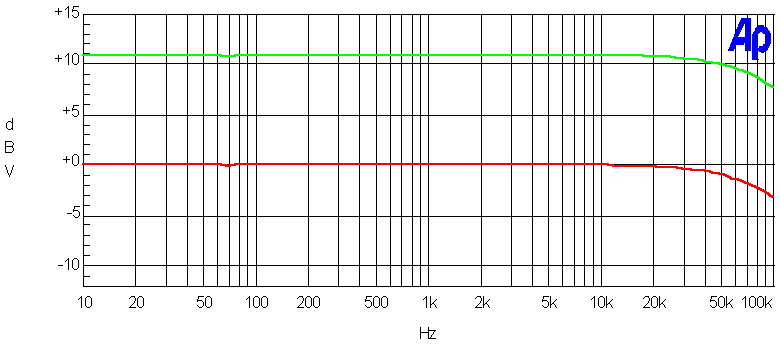

CA3046 VCA

Using discrete transistors from a transistor
array, this circuit avoids an OTA altogether. It uses one
transistor as a Gilbert multiplier to predistort the signal, so
that a larger signal can be fed into the circuit. The circuit is
based on the one described in Modulus issue 5, that was provided
by Chris Crosskey.
I have modfied it with a trimmer to adjust the DC offset and
adjusted the input sensitivity and output gain to give some
headroom and unity gain. This VCA has a linear response. A diode
has been added on the control input, to block out negative
voltages, which cause DC on the output. Because of the diode, the
control caracreristics is unlinear below 1 volt.
The predistortion really works in this circuit. The distortion
stays low up to a point where it suddenly increases dramatically.
With the chosen resistor values, that point is well above normal
signal levels.
Noise figures for this circuit is comparable to the SSM2024 and
the LM13600 but signal bleedthrough is not as good. On the other
hand, CV bleedthrough is lower than the LM13600, with proper
trimming.
Noise & signal attenuation
Red = signal bleedthtrough at 0V CV. Blue = 10V CV, no signal. Green = 0V CV, no signal.

Distortion (THD+N) vs. input level

Frequency response

Test results
| Dynamic range | 10 V CV, no signal | 82 dBr A |
| 0 V CV, no signal | 107 dBr A | |
| 0 V CV, 1kHz 10 V p-p in | 86 dBr A | |
| 0 V CV, 2 kHz 10 V p-pin | 80 dBr A | |
| 0 V CV, 10 kHz 10 V p-pin | 63 dBr A | |
| Headroom (over 10V p-p) | 6 dB | |
| CV bleedthrough | with careful trimming | 5 mV |
Summary
A clever design but has no real advantages over the LM13600.
+
• Low CV bleedthrough
• Fairly low distortion over a wide range of signal levels
–
• Fairly high signal bleedthrough